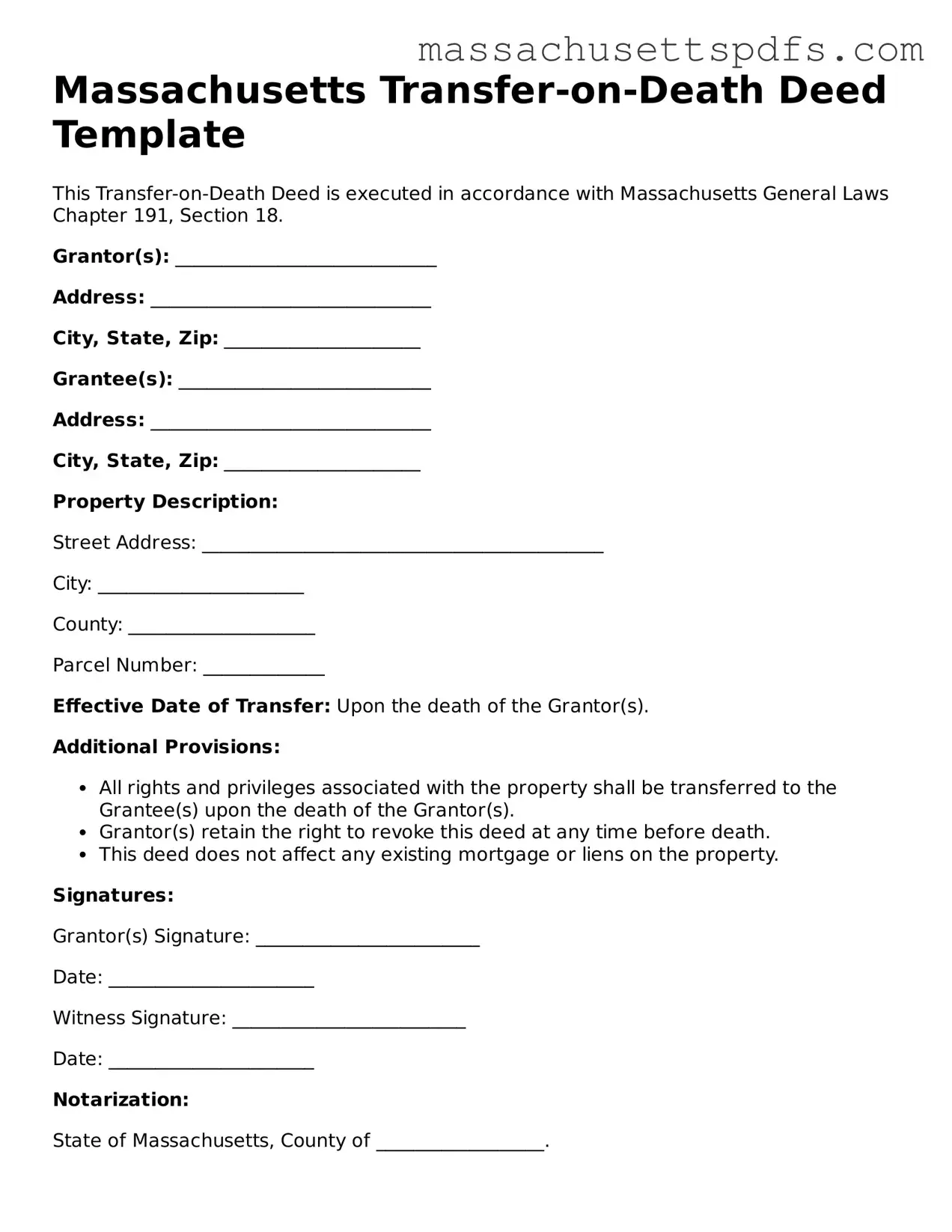Attorney-Approved Massachusetts Transfer-on-Death Deed Document
The Massachusetts Transfer-on-Death Deed form allows property owners to transfer their real estate to designated beneficiaries upon their death, bypassing probate. This legal tool simplifies the transfer process and provides peace of mind for property owners and their heirs. To get started, fill out the form by clicking the button below.
Launch Editor Here
